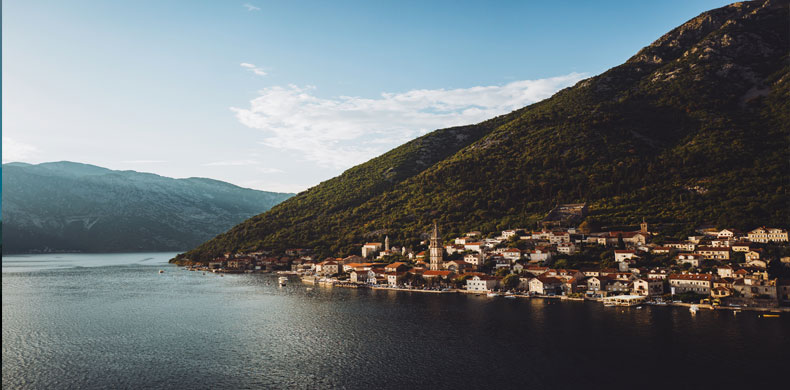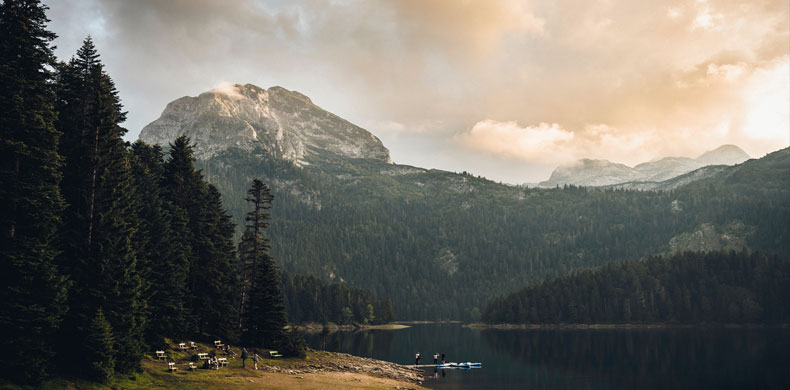



Rest, reconnect with nature, play sports. Montenegro is a destination of choice for lovers of wide open spaces and off-track explorations that are all too common. Mostly mountainous, the country nevertheless has an astonishing diversity of landscapes in terms of its size. Thus, pebble coves lined with Bar olive trees, it only takes a short hour's drive to find yourself in a fjord landscape worthy of northern latitudes. Similarly, it is only necessary to travel about sixty kilometres to pass from the often stifling heat of the capital, Podgorica, to the invigorating good air of the mid-altitude mountains of Kolain or the arid and rocky landscapes around Cetinje to the lush vegetation of Lake Skadar. With its four national parks, its rugged coastline, its forests, which cover some 45% of its territory, and its mountains, entire parts of which are unspoilt by urbanization, Montenegro is ideal for many outdoor activities. The Durmitor massif and the Tara canyon, located in the northwest of the country, are worth the trip. Both listed as World Heritage Sites by UNESCO, these sites reflect the country's image: spectacular and wild.
Download a free excerpt from the Petit Futé Guide
A welcoming coastline :
Just under 300 kilometres long, Montenegro's coastline is as beautiful as its neighbour Croatia. Unlike the rest of the country, this part of Montenegro enjoys a very mild climate and has long had a tourist vocation. In the mouths of Kotor, a 1,500-metre high karst mountain range, parallel to the sea, separates the coast from the hinterland and plunges vertiginously into the clear, blue waters of the Adriatic. At the bottom of this stone wall, Venetian Gothic palaces and churches, small fishing ports, lush gardens and secluded coves recall an Italian film setting. Just as cut out and also surmounted by mountains, the part of the coast that extends from Budva to Ulcinj offers a series of irresistibly attractive beaches. Anses, islets, pebble beaches and large beaches of fine sand alternate with the lively and typical seaside resorts of the Mediterranean where in the evening the terraces of cafés and restaurants are taken by storm. Budva, whose atmosphere is similar to that of a small Montenegrin Ibiza, is bustling every summer. A little further away, Ulcinj is probably the most exotic city in the country, with its minarets and colourful market.


© Dominique Auzias & Jean-Paul Labourdette
| January | February | March | April | May | June | July | August | September | October | November | December | |
|---|---|---|---|---|---|---|---|---|---|---|---|---|
| Opinion |  |
 |
 |
 |
 |
 |
 |
 |
 |
 |
 |
 |
| Temperature | 10° | 12° | 16° | 19° | 25° | 29° | 33° | 33° | 27° | 22° | 15° | 11° |
| Rainy days | 9j  |
12j  |
10j  |
12j  |
12j  |
8j  |
7j  |
3j  |
9j  |
8j  |
10j  |
11j  |
| Sea temperature | 14°  |
14°  |
14°  |
16°  |
19°  |
23°  |
26°  |
25°  |
24°  |
21°  |
19°  |
16°  |
| Beach/Bathing |  |
 |
 |
 |
||||||||
| Hiking |  |
 |
 |
 |
| 01 | 02 | 03 | 04 | 05 | 06 | 07 | 08 | 09 | 10 | 11 | 12 |
|---|---|---|---|---|---|---|---|---|---|---|---|
 |
 |
 |
 |
 |
 |
 |
 |
 |
 |
 |
 |
| 10° | 12° | 16° | 19° | 25° | 29° | 33° | 33° | 27° | 22° | 15° | 11° |
9j  |
12j  |
10j  |
12j  |
12j  |
8j  |
7j  |
3j  |
9j  |
8j  |
10j  |
11j  |
14°  |
14°  |
14°  |
16°  |
19°  |
23°  |
26°  |
25°  |
24°  |
21°  |
19°  |
16°  |
 |
 |
 |
 |
||||||||
 |
 |
 |
 |